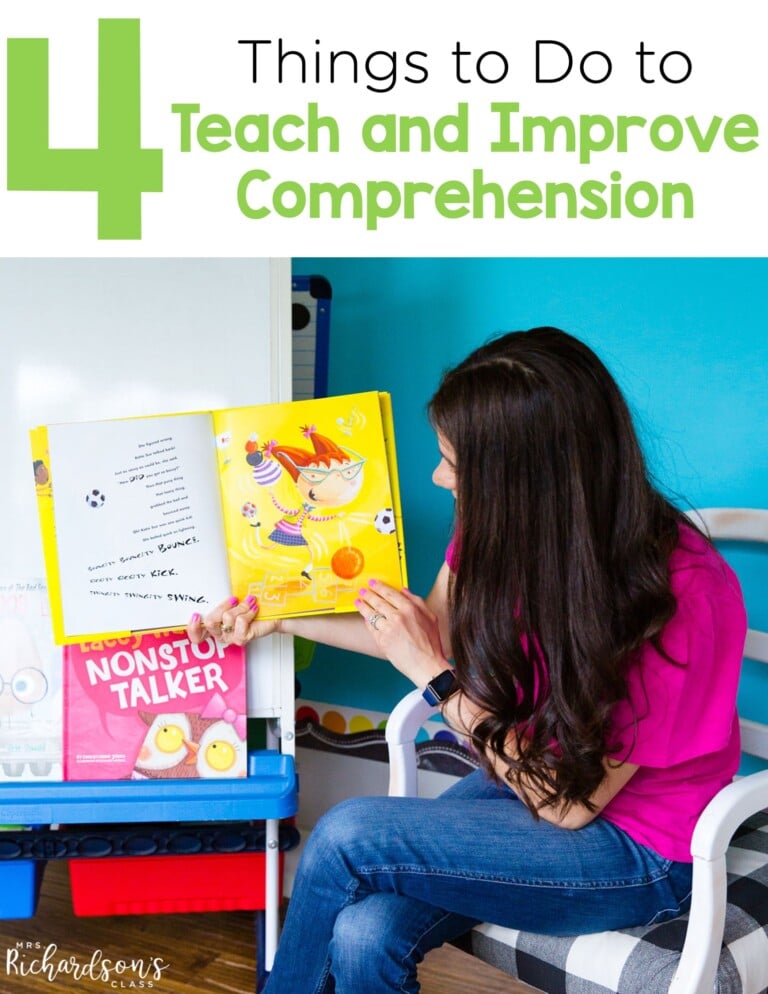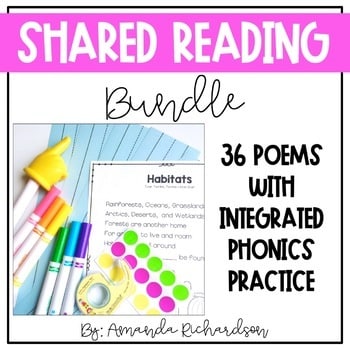


When it comes to using manipulatives in the classroom, we often think of math manipulatives. What about using literacy manipulatives in the classroom? Yes, friends! Literacy manipulatives are a great way to help readers develop stronger phonics, fluency, and comprehension skills.
Chances are that you are already using some literacy manipulatives in your own classroom. Today I’ll show you some of my favorite manipulatives to use that are simple yet effective. At the bottom of this post, I also have a free set of literacy manipulatives for you to download and use with your students!
Literacy manipulatives are physical objects that students can use and manipulate to help them build stronger reading and writing skills. They help students cultivate language skills with hands-on practice. Literacy manipulatives can be used with phonics in a whole group setting to building words with letter tiles in a small group setting. Simply put, any physical object that you or your students use in reading and writing is a manipulative.
There are endless choices for manipulatives that you could use with your students. Today I’m going to share my favorite basic ones that you should consider keeping handy all year long.
Alphabet arcs help students improve the automaticity of letter recognition. You can use alphabet arcs in small groups or for 1-1 intervention time. Students can match letter tiles or magnets to the alphabet arc, sequence letters, identify letter sounds, and even use them as the move on to word building.
Alphabet charts can be very helpful for our youngest readers. We want them to link a letter to a sound (phoneme) and visual (grapheme). You can have students name the letters, chant the sounds, or both. You can read more about working with nonreading students in reading small groups HERE.
If you don’t have plastic or magnetic letters (or just need lots of sets of letters), printable letter tiles are the way to go! Print the page of letter tiles, laminate it, and then cut out the letter tiles. You can use letter tiles in literacy stations, reading small groups, 1-1 intervention time, and in a whole group setting.
Students can sort letters, match letters, and build words. You can make each student a set of letter tiles and store them in plastic baggies.
Phonemic awareness, which is the ability to hear and manipulate sounds, is where reading readiness and teaching a child to read begins. Using Elkonin boxes can provide students with a different way to visually see how to segment words into sounds and blend sounds together.
You can guide students through practicing hearing the phonemes in words. Elkonin boxes can be used both one-on-one with a student who really needs more support or in a small group.
A sound wall is a chart that has all of the different sounds that letters represent. Readers can use the sound wall to sound out words, practice phonics skills, and connect sounds to spelling patterns.
The letter matching mat is perfect for helping students work on visual discretion as they work on letter identification. Students can use these mats to match uppercase and lowercase letters.
Playdoh smash mats were always a favorite in my classroom! I loved them because my students could practice so many different things with them. From phoneme identification and syllabication to spelling words, they have so many uses. You can use these in literacy stations, reading small groups, or for 1-1 practice.
To help get your classroom stocked with literacy manipulatives, I have all of these items for you in a FREE download! Just leave your email address below and I’ll get them right to you!
I also have a set of literacy manipulatives geared towards distance learning HERE!
Not only do literacy manipulatives make learning more fun, but they really provide students more ways to engage with letters and texts, develop stronger comprehension skills, and build fluency skills. All of this ultimately leads to better readers. I hope you’ll find these tools useful and effective in your own classroom!

Want to use the latest research to boost your readers during small groups? This FREE guide is packed with engaging ideas to help them grow!

I’m a K-1 teacher who is passionate about making lessons your students love and that are easy to implement for teachers. Helping teachers like you navigate their way through their literacy block brings me great joy. I am a lifelong learner who loves staying on top of current literacy learning and practices. Here, you’ll find the tools you need to move your K-2 students forward!



| Cookie | Duration | Description |
|---|---|---|
| cookielawinfo-checkbox-analytics | 11 months | This cookie is set by GDPR Cookie Consent plugin. The cookie is used to store the user consent for the cookies in the category "Analytics". |
| cookielawinfo-checkbox-functional | 11 months | The cookie is set by GDPR cookie consent to record the user consent for the cookies in the category "Functional". |
| cookielawinfo-checkbox-necessary | 11 months | This cookie is set by GDPR Cookie Consent plugin. The cookies is used to store the user consent for the cookies in the category "Necessary". |
| cookielawinfo-checkbox-others | 11 months | This cookie is set by GDPR Cookie Consent plugin. The cookie is used to store the user consent for the cookies in the category "Other. |
| cookielawinfo-checkbox-performance | 11 months | This cookie is set by GDPR Cookie Consent plugin. The cookie is used to store the user consent for the cookies in the category "Performance". |
| viewed_cookie_policy | 11 months | The cookie is set by the GDPR Cookie Consent plugin and is used to store whether or not user has consented to the use of cookies. It does not store any personal data. |



4 Responses
Thank you for all of your insight. As a new reading specialist who is learning so much, your practical info. and materials are priceless!
You are most welcome, Kelly! I’m so glad you are finding things helpful!! 🙂
Thank you for these materials! I am excited to use them in my classroom. I am having trouble getting vowel valley to print correctly. It keeps cutting off the right side. Do you have any helpful tricks or tips?
Hi Becky! Oh no! I’m so sorry!! No, I have no idea why. I’m so sorry!! You can try changing the percentage–maybe print at 75% and see if that helps at all?? Just a thought!